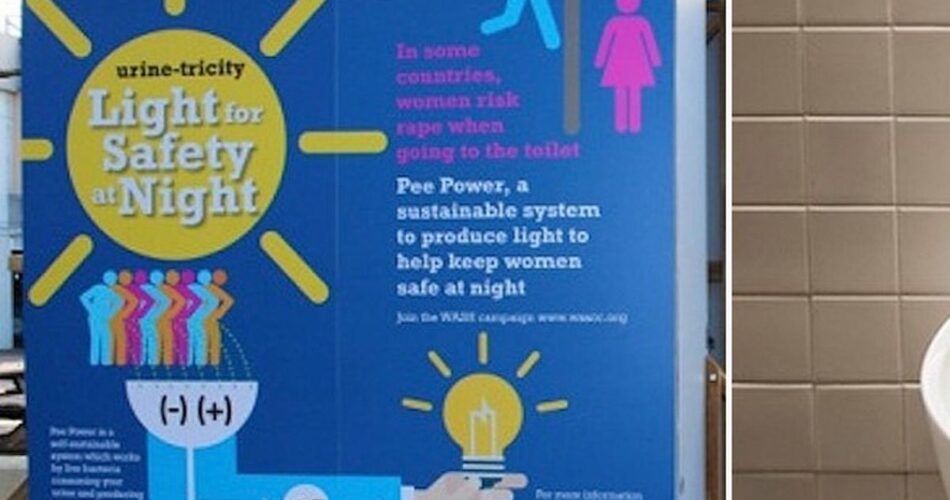It’s like killing two birds with one stone
In 2017, during the Glastonbury Festival, they have been placed some special urinals where pee wasn’t just flushed away but converted into electricity that was used to power message boards for the festival. The urinal which was developed by scientists from the University of West of England in Bristol had to deal with 1,000 liters of urine a day and use bacteria to convert chemical energy in the urine into electricity.
The process is the same as the chemical fuel cells which generate a flow of electrons between an anode and a cathode by using micro-organisms that break down the organic compounds within the urine to produce a current. So, microbes provide electrons.
Microbial fuel cells (MFC) are cheap and renewable. They use carbon electrodes, so expensive metals aren’t necessary; moreover, the bacteria are common and free and the fuel itself is everywhere.
In addition, you can use anything that contains organics as well as urine, such as wastewater from other bodily fluids.
But there’s more. Microbial fuel cells can not only produce power from wastewater at a low cost, but they can also purify the water as they do so. This is because, in a process very similar to what occurs in wastewater treatment plants, the electroactive microorganisms break down and consume the long-chain sugars found in the wastewater, effectively removing chemicals like carbon, nitrogen, phosphorous, potassium, magnesium, and sodium from the water.
As explained here, this demonstrated the technology’s potential for use in disaster areas and refugee camps, where there is frequently a lack of power and a lack of exterior illumination at night rendering people more susceptible to possible threats. However, it opens up a wide range of additional possible uses, such as routine installation in off-grid regions of the world where municipal resources for trash cleaning are few.
According to studies, MFCs appear to have some disinfecting properties, which is probably because hydrogen peroxide is produced during the energy-generating process. The bacteria driving the MFC are not killed by this process because it occurs later in the fuel cell system.
This disinfection potential gave researchers an idea to systematically test how MFCs could be used to purify wastewater. Therefore, they picked a strain of the Salmonella bacterium which causes typical food poisoning symptoms.
When they analyzed the outflow after the purification process was complete to gauge the levels of leftover pathogens, they discovered exactly what they had hoped for: significantly decreased Salmonella counts.
In fact, the pathogen levels were reduced by the batteries to levels that are regarded acceptable by traditional sanitation practices.
This project was founded by the Bill & Melinda Gates Foundation, and the festival was used to promote this kind of technology.

